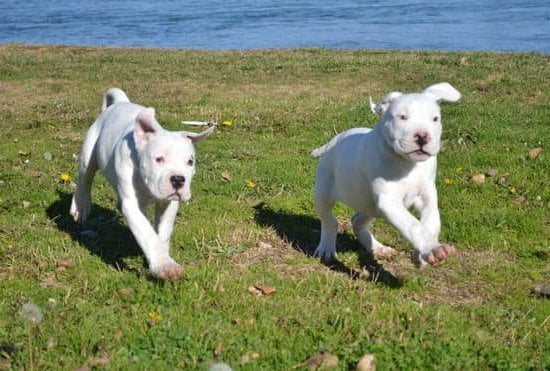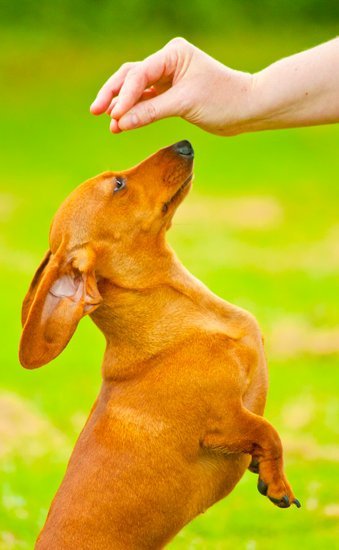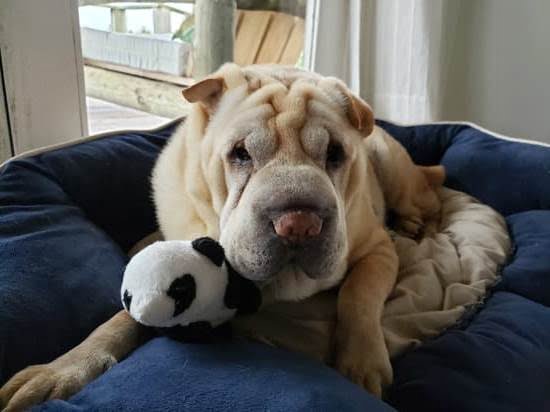Are you wondering how to train Belgian Malinois dog? The Belgian Malinois is a highly intelligent and energetic breed that requires proper training and socialization to thrive in a domestic environment. Understanding their history, temperament, and characteristics is crucial for successful training. In this article, we will explore the essential aspects of training a Belgian Malinois, from basic obedience to advanced commands, socialization, mental stimulation, physical exercise, and troubleshooting common challenges.
The first step in effectively training a Belgian Malinois is understanding the breed’s background. By delving into their history, temperament, and unique characteristics, trainers can tailor their approach to suit the specific needs of these remarkable dogs. This comprehensive understanding will lay the foundation for a successful and fulfilling training experience for both the owner and the Belgian Malinois.
As with any type of training, proper preparation is key. In this section, we will discuss the essential equipment, tools, and resources needed to set up a conducive training environment for your Belgian Malinois. From choosing the right collar and leash to creating a structured training schedule, preparing for training is an important step in ensuring success for both the owner and the dog.
Preparing for Training
When preparing to train a Belgian Malinois, it is important to have the right equipment, tools, and resources to set you and your dog up for success. This breed is known for its intelligence, energy, and drive, so having the proper training gear is essential for effective learning and communication.
Basic Training Equipment
Before you begin any training regimen with your Belgian Malinois, it’s important to have the basic essentials such as a well-fitting collar or harness, sturdy leash, and plenty of tasty treats for positive reinforcement. These items will be used in all aspects of training, from basic obedience to advanced commands.
Training Tools
In addition to the basic equipment, there are various tools that can aid in the training process. For example, clickers can be used for clicker training to mark desired behaviors. Interactive toys and puzzles can also provide mental stimulation and help prevent boredom in this high-energy breed. Considering their strong prey drive and natural herding instincts, having tug toys or flirt poles can be useful for engaging games that tap into their natural instincts.
Training Resources
When it comes to resources for training a Belgian Malinois, enrolling in obedience classes or working with a professional trainer experienced with this breed can be invaluable. Additionally, there are numerous books, online tutorials, and training videos specifically tailored to how to train Belgian Malinois dog that can provide guidance and insight into effective training techniques. It’s important to note that consistent training methods using positive reinforcement are key when working with Belgian Malinois dogs.
Basic Obedience Training
Now that you have a good understanding of the Belgian Malinois breed, it’s time to start the training process. Basic obedience training is essential for any dog, including Belgian Malinois. This type of training will lay the foundation for more advanced commands and behaviors down the line. In this section, we will discuss how to train your Belgian Malinois to respond to simple commands like sit, stay, come, and heel.
Positive Reinforcement
When it comes to training your Belgian Malinois, positive reinforcement is key. This means rewarding your dog with treats, praise, or toys when they successfully execute a command. Positive reinforcement has been proven to be the most effective method for training dogs as it encourages them to repeat the desired behavior.
Consistency and Patience
Consistency is also crucial when teaching your Belgian Malinois basic commands. Make sure that everyone in the household uses the same cues and rewards to avoid confusion for your dog. Additionally, patience is important as every dog learns at their own pace. Some commands may take longer for your Belgian Malinois to grasp than others.
Training Techniques
There are various techniques you can use to train your Belgian Malinois basic obedience commands. For example, luring with treats can be used to teach sit and stay, while using a long line can help with practicing the come command. It’s important to research and understand different training techniques so that you can choose the best approach for your dog based on their personality and learning style.
By focusing on positive reinforcement, consistency, patience, and utilizing effective training techniques, you can successfully teach your Belgian Malinois basic obedience commands. Remember that each dog is unique, so it’s important to tailor your training approach according to their individual needs and preferences. Keep practicing these simple commands regularly before moving on to more advanced training with your Belgian Malinois.
Advanced Training
The Belgian Malinois is an intelligent and highly trainable breed, which makes them perfect candidates for advanced training. Once your dog has mastered the basic commands like sit, stay, come, and heel, it’s time to take their training to the next level.
One of the key aspects of advanced training for Belgian Malinois dogs is teaching them more complex commands and behaviors. This can include tasks such as retrieving specific items, learning hand signals in addition to verbal cues, and mastering off-leash obedience. These advanced commands not only challenge your dog mentally but also strengthen the bond between you and your furry friend.
In addition to teaching new commands, advanced training for Belgian Malinois dogs should also focus on refining their existing skills. For example, you can work on improving their response time to commands, increasing the duration that they can hold a specific position (e.g. sit or down), and adding distractions to test their focus and obedience.
It’s important to remember that advanced training for Belgian Malinois dogs should always be conducted with positive reinforcement techniques. This breed responds well to praise, treats, and play as rewards for good behavior. Using forceful or harsh methods can lead to resistance and even behavioral issues in these intelligent dogs.
| Aspect of Training | Description |
|---|---|
| New Commands | Teach more complex tasks such as retrieving specific items and off-leash obedience. |
| Skill Refinement | Focus on improving response time, duration of holding positions, and obedience in distracting environments. |
| Positive Reinforcement | Use praise, treats, and play as rewards instead of forceful or harsh methods. |
Socialization
Socializing your Belgian Malinois is an essential part of their training and development. Properly introducing them to other dogs, people, and different environments will help them become well-rounded, well-behaved pets. Here are some tips on how to socialize your Belgian Malinois:
- Start early: It’s important to start socialization as early as possible, ideally when they are still puppies. This is the critical period for them to learn about the world around them and form positive associations with new experiences.
- Exposure to different environments: Take your Belgian Malinois to various places such as parks, busy streets, shopping areas, and anywhere else where they can encounter different sights, sounds, and smells. Gradually exposing them to new environments will prevent fear or anxiety in unfamiliar situations.
- Meet other dogs and people: Encourage positive interactions with other dogs by arranging playdates or visits to dog parks. Similarly, introduce them to a variety of people including children, adults, and seniors. Always supervise these interactions and make sure they are positive experiences for your dog.
Properly socializing your Belgian Malinois will ensure that they grow up to be confident, friendly, and well-adjusted pets. Socialization is an ongoing process that should continue throughout their life to prevent any potential behavioral issues in adulthood.
Mental Stimulation
Belgian Malinois dogs are known for their high energy levels and intelligence. This combination makes mental stimulation an essential component of their training regimen. Without proper mental exercise, the Belgian Malinois can become bored, restless, or even exhibit destructive behavior. Therefore, incorporating various mental exercises and activities is crucial in keeping them engaged and fulfilled.
One effective way to provide mental stimulation for a Belgian Malinois is through interactive toys and puzzles. These toys can challenge the dog’s problem-solving skills and keep them mentally engaged. Additionally, hiding treats around the house or using treat-dispensing toys encourages the Belgian Malinois to use their sense of smell and cognitive abilities to find the rewards.
Another important aspect of mental stimulation for a Belgian Malinois is providing them with new experiences and environments. Taking the dog on different walking routes, visiting new places, or introducing them to novel objects can help keep their minds active and curious. This exposure also aids in preventing behavioral issues that may arise from boredom or lack of mental engagement.
Engaging in activities such as agility training, obedience competitions, or scent work can also provide the mental challenge that Belgian Malinois dogs need. These activities not only stimulate their minds but also strengthen the bond between the dog and their owner or trainer. It is crucial to remember that mental stimulation should be incorporated into a Belgian Malinois’s daily routine to ensure they remain happy, fulfilled, and well-behaved pets.
| Belgian Malinois Mental Stimulation Tips | Benefits |
|---|---|
| Interactive toys and puzzles | Challenges problem-solving skills |
| New experiences and environments | Prevents behavioral issues from boredom |
| Agility training, obedience competitions, scent work | Strengthens bond with owner/trainer while providing mental challenge |
Physical Exercise
Belgian Malinois dogs are known for their high energy levels and need for regular physical exercise. Without proper exercise, they can become bored, restless, and even destructive. Understanding how to properly exercise a Belgian Malinois is crucial for their physical health and mental well-being.
One of the best ways to ensure that a Belgian Malinois receives the necessary physical activity is through regular and rigorous exercise. Long walks, runs, and hikes are ideal for this breed. Additionally, engaging in activities such as fetch, agility training, and obedience trials can provide both physical and mental stimulation for the dog. It’s important to remember that these dogs thrive on challenging activities and will benefit greatly from participating in advanced training exercises.
Moreover, incorporating playtime with other dogs or engaging in canine sports like flyball or herding can tap into the breed’s natural instincts and keep them mentally engaged. Since Belgian Malinois dogs are highly intelligent, it’s essential to vary their exercise routine regularly to prevent boredom. This may include introducing new toys or activities periodically.
Troubleshooting Common Training Challenges
Training a Belgian Malinois can be an exhilarating experience, but it also comes with its fair share of challenges. This section will provide strategies for addressing common training issues such as stubbornness, aggression, and leash pulling in the Belgian Malinois. By understanding these challenges and implementing the right techniques, you can effectively guide your Belgian Malinois towards becoming a well-behaved and disciplined companion.
Belgian Malinois dogs are known for their intelligence and independence, which can sometimes translate into stubborn behavior during training sessions. To address stubbornness, it’s important to establish yourself as the pack leader and remain consistent with your commands. Use positive reinforcement techniques such as treats and praise to motivate your Belgian Malinois to obey commands. Additionally, keep training sessions short and engaging to maintain their focus and reduce any tendencies towards stubbornness.
Aggression in Belgian Malinois dogs can be a serious concern if not addressed properly. It’s crucial to socialize your Belgian Malinois from a young age to ensure they are comfortable around other animals and people. If they exhibit signs of aggression, seek professional help from a dog trainer or behaviorist who specializes in working breeds like the Belgian Malinois. Utilize positive reinforcement methods to redirect their aggressive behavior and establish calm and assertive leadership.
Due to their strong work ethic and high energy levels, Belgian Malinois dogs may display leash pulling tendencies during walks or training exercises. To address this issue, consider using a front-clip harness that discourages pulling by redirecting their body’s natural movement when they pull on the leash.
Implement loose-leash walking techniques by rewarding them for walking calmly beside you and consistently reinforcing this behavior during walks. Additionally, engage them in ample physical exercise to help release excess energy that may contribute to leash pulling tendencies.
By addressing these training challenges with patience, consistency, and positive reinforcement, you’ll be better equipped to guide your Belgian Malinois towards success in their training journey.
Continuing Education
In conclusion, training a Belgian Malinois dog requires dedication, patience, and a deep understanding of the breed’s unique characteristics. From basic obedience to advanced commands, socialization, mental stimulation, and physical exercise, it is essential to provide a well-rounded training regimen to keep these intelligent and high-energy dogs engaged and fulfilled.
One of the most important aspects of ongoing training for a Belgian Malinois is to continue providing mental stimulation. This can include puzzle toys, scent work, agility training, or even enroll them in advanced obedience classes. Mental exercises are crucial in preventing boredom and destructive behavior in this highly intelligent breed.
Additionally, continuing education resources such as books, online courses, and workshops can provide new insights and techniques for training a Belgian Malinois dog. It is important for owners to stay updated on the latest training methods and behavior modification strategies to ensure their Malinois remains well-behaved throughout their life.
In summary, training a Belgian Malinois requires consistent effort and dedication. By understanding the breed’s temperament and unique needs, as well as incorporating ongoing education and mental stimulation into their training regimen, owners can ensure that their Belgian Malinois becomes a well-mannered and well-adjusted canine companion.
Frequently Asked Questions
Are Belgian Malinois Easy to Train?
Belgian Malinois are known for their intelligence and trainability, making them relatively easy to train for experienced dog owners. However, they require a consistent and firm hand in training to ensure they understand boundaries and expectations.
How Do You Tame a Belgian Malinois?
Taming a Belgian Malinois requires patience, consistency, and positive reinforcement. Building a strong bond with the dog is crucial, as they are highly loyal and respond well to training methods that emphasize mutual trust and respect.
What Age Is Best to Start Training a Belgian Malinois?
The best age to start training a Belgian Malinois is around 8-10 weeks old. This is a critical period for socialization and learning basic commands. Early training helps establish good behavior patterns and prevents potential behavior issues later on.

Welcome to the blog! I am a professional dog trainer and have been working with dogs for many years. In this blog, I will be discussing various topics related to dog training, including tips, tricks, and advice. I hope you find this information helpful and informative. Thanks for reading!





